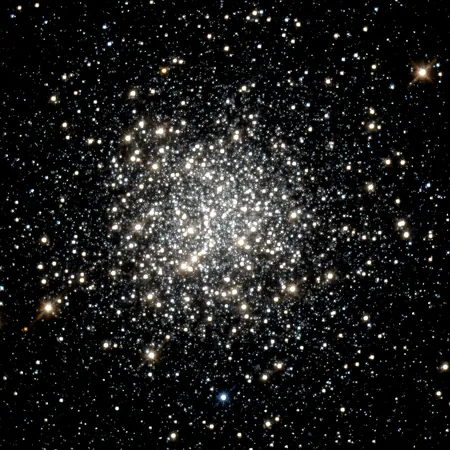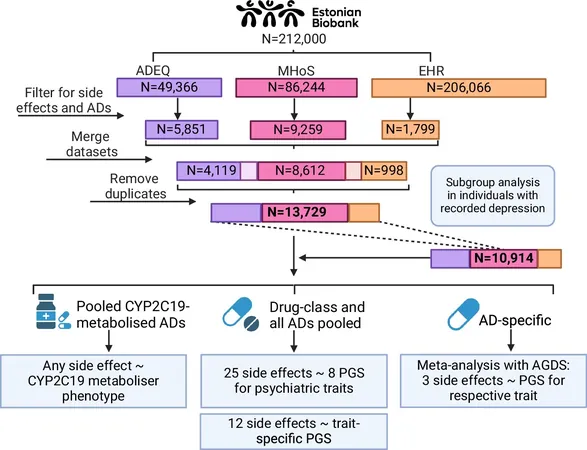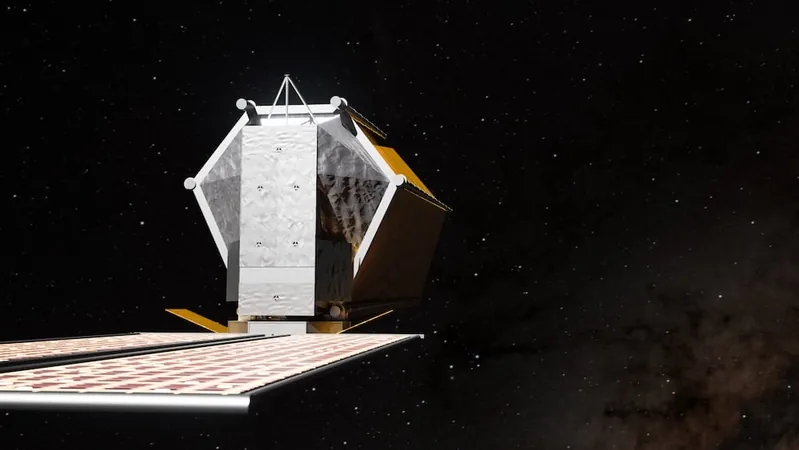
Unlocking the Secrets of NGC 1754: A Stellar Oldie from the Large Magellanic Cloud
2025-05-27
Author: Yu
Astronomical Breakthrough with Hubble's Eye
A groundbreaking study using the Hubble Space Telescope (HST) has turned the spotlight on NGC 1754, a fascinating globular cluster nestled in the Large Magellanic Cloud (LMC). Released on May 15, the new findings reveal captivating insights into this ancient star cluster's properties.
What Makes Globular Clusters Special?
Globular clusters, such as NGC 1754, are tightly packed star assemblies containing tens of thousands to millions of stars. These stellar 'time capsules' are formed from gas that collapsed and compressed at similar times, making them perfect for studying cosmic evolution.
A Journey Through Space and Time
Discovered back in 1836, NGC 1754 stands approximately 170,000 light years from Earth. With a core radius of about 2.87 light years and a total mass around 100,000 solar masses, this ancient cluster boasts a metallicity of -1.45, indicating it’s rich in stars with fewer heavy elements.
High-Resolution Imaging Unlocks New Details
Astronomers, led by Camilla Giusti from the University of Bologna, utilized HST’s powerful Wide Field Camera 3 (WFC3) and Advanced Camera for Surveys (ACS) to conduct detailed imaging. They captured 16 high-resolution images focusing on NGC 1754 and supplemented these with another set of 13 images from ACS, offering a comprehensive look at this starry marvel.
Ancient Yet Dynamic
The study confirms NGC 1754's core radius to be approximately 2.74 light years, a half-mass radius of 10.2 light years, and an impressive age of 12.8 billion years. These traits solidify its status as a compact and ancient globular cluster, teetering on the edge of core collapse.
Cosmic Connections: An Insight into Star Formation
The findings suggest that globular cluster formation in both the LMC and our own Milky Way Galaxy began around the same cosmic epoch, highlighting a possible universality in star cluster evolution independent of environmental factors.
Dynamic Evolution Shapes Stellar Legacy
The research also indicates that NGC 1754 is nearing core collapse, a critical stage in its dynamical evolution. This insight underscores how the unique dynamics of each cluster contribute to the observed variations in core radius and age across the LMC.
Final Thoughts: A Stellar Journey Ahead
As astronomers dive deeper into the mysteries of NGC 1754, this stellar research not only enhances our understanding of globular clusters but also sheds light on the broader cosmic timeline of star formation.






 Brasil (PT)
Brasil (PT)
 Canada (EN)
Canada (EN)
 Chile (ES)
Chile (ES)
 Česko (CS)
Česko (CS)
 대한민국 (KO)
대한민국 (KO)
 España (ES)
España (ES)
 France (FR)
France (FR)
 Hong Kong (EN)
Hong Kong (EN)
 Italia (IT)
Italia (IT)
 日本 (JA)
日本 (JA)
 Magyarország (HU)
Magyarország (HU)
 Norge (NO)
Norge (NO)
 Polska (PL)
Polska (PL)
 Schweiz (DE)
Schweiz (DE)
 Singapore (EN)
Singapore (EN)
 Sverige (SV)
Sverige (SV)
 Suomi (FI)
Suomi (FI)
 Türkiye (TR)
Türkiye (TR)
 الإمارات العربية المتحدة (AR)
الإمارات العربية المتحدة (AR)